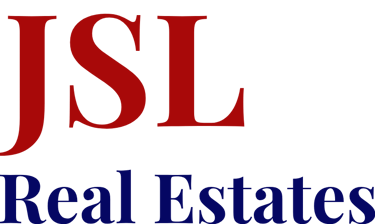Securing Your First Mortgage; A complete guide to First time home buyers
Buying your first home is one of the most significant milestones in life. It’s exciting, but it can also be overwhelming, especially when it comes to securing your first mortgage...


1. What is a Mortgage?
A mortgage is a loan specifically designed to help you purchase a home. Instead of paying the full price upfront, a lender—typically a bank or mortgage company—provides you with the funds to purchase the property. You agree to pay back the loan over time, typically in monthly installments, with added interest. If you fail to make these payments, the lender can repossess the home.
Key Components of a Mortgage:
Principal: The amount you borrow from the lender.
Interest: The cost of borrowing money, expressed as a percentage of the loan amount.
Term: The length of time you have to repay the mortgage, typically 15, 20, or 30 years.
Down Payment: The initial payment you make toward the home's purchase price, usually a percentage of the total cost.
2. Steps to Securing Your First Mortgage
2.1 Assess Your Financial Health
Before diving into mortgage applications, take a close look at your financial situation. This will help you understand how much house you can afford and what kind of loan you qualify for.
Credit Score: Your credit score plays a major role in determining the interest rate and loan terms you're offered. A higher score often leads to better mortgage options. Aim for a score of at least 620 for conventional loans, though FHA loans may accept lower scores.
Debt-to-Income (DTI) Ratio: Lenders use your DTI ratio to gauge your ability to manage monthly payments. To calculate this, divide your monthly debt payments by your gross monthly income. Most lenders prefer a DTI ratio under 43%.
Savings: Ensure you have enough savings for a down payment, closing costs, and an emergency fund. The higher your down payment, the less you'll have to borrow, potentially lowering your monthly payments.
2.2 Determine Your Budget
Now that you understand your financial situation, it’s time to determine how much you can afford. Consider all the costs of homeownership beyond just the mortgage:
Down Payment: The recommended down payment is 20%, but many first-time homebuyers make smaller down payments, sometimes as low as 3%. Be aware that a lower down payment may require private mortgage insurance (PMI), adding to your monthly costs.
Closing Costs: These are the fees associated with finalizing the home purchase and typically range between 2-5% of the loan amount.
Property Taxes, Insurance, and Maintenance: Don't forget ongoing costs such as property taxes, homeowners insurance, and maintenance, which can significantly impact your budget.
2.3 Shop Around for Lenders
Not all mortgage lenders are the same. Shopping around can save you thousands of dollars over the life of the loan. Compare offers from multiple lenders, including banks, credit unions, and online lenders.
Interest Rates: The interest rate significantly affects your monthly payments. Even a small difference can add up over time.
Loan Terms: A 30-year fixed-rate mortgage is the most common, but there are other options, like a 15-year fixed-rate or adjustable-rate mortgage (ARM). Consider what works best for your financial situation.
Lender Fees: Pay attention to fees that lenders charge, including origination fees, underwriting fees, and appraisal fees. These can vary from lender to lender.
2.4 Get Preapproved for a Mortgage
A mortgage preapproval gives you a better idea of how much a lender is willing to let you borrow. It shows sellers you're a serious buyer, giving you an edge in competitive markets. To get preapproved, you’ll need to provide the lender with:
Proof of income (pay stubs, tax returns)
Employment verification
Proof of assets (bank statements, investment accounts)
Credit history
The preapproval letter will detail the loan amount you qualify for, your estimated interest rate, and the type of loan. Keep in mind that this isn’t a guarantee but a strong indicator of what you can expect.
2.5 Understand Different Types of Mortgages
There are several types of mortgages available to first-time homebuyers. Understanding the options will help you choose the best loan for your financial situation.
Conventional Loan
A conventional loan is not insured by the federal government and usually requires a higher credit score and down payment. However, it often comes with better terms, such as lower interest rates.
FHA Loan
FHA (Federal Housing Administration) loans are a popular option for first-time homebuyers because they require lower down payments (as low as 3.5%) and more lenient credit requirements. However, they require mortgage insurance premiums (MIP), which increases your monthly payments.
VA Loan
Available to veterans, active-duty service members, and some military spouses, VA loans offer competitive interest rates, no down payment, and no private mortgage insurance. The U.S. Department of Veterans Affairs guarantees a portion of the loan.
USDA Loan
If you’re buying in a rural area, a USDA loan might be an option. These loans are backed by the U.S. Department of Agriculture and offer no down payment and lower interest rates for qualifying buyers.
2.6 Lock in Your Interest Rate
Once you’ve found a lender and been approved, you’ll want to lock in your interest rate. This protects you from market fluctuations between the time you’re approved and when you close on your home. Rate locks usually last between 30 and 60 days, depending on your lender.
2.7 Close the Loan
The final step is closing on your mortgage. At this stage, you’ll sign the paperwork, pay any remaining closing costs, and officially take ownership of your new home.
3. Mortgage Terminology You Need to Know
Amortization: The process of paying off the loan through scheduled, incremental payments over time.
APR (Annual Percentage Rate): The total cost of borrowing, including interest and fees, expressed as a yearly percentage.
Escrow: An account where funds for property taxes and homeowners insurance are held until they are due.
PMI (Private Mortgage Insurance): Insurance that protects the lender if you default on your loan, typically required if your down payment is less than 20%.
4. First-Time Homebuyer Programs and Incentives
Many states, municipalities, and organizations offer special programs to help first-time homebuyers. These can provide financial assistance in the form of down payment grants, lower interest rates, or reduced closing costs.
Fannie Mae and Freddie Mac: These government-sponsored enterprises offer programs designed to help first-time buyers with lower down payments and more flexible credit requirements.
Local and State Programs: Many local governments have first-time homebuyer programs, offering anything from assistance with down payments to reduced interest rates. Research what’s available in your area.
HomeReady and Home Possible: These are two popular programs offered by Fannie Mae and Freddie Mac, respectively, that allow low down payments and more lenient credit requirements.
5. Common Pitfalls to Avoid
5.1 Taking on Too Much Debt
It’s tempting to buy the most expensive home you can afford, but overextending yourself can lead to financial hardship. Stick to a budget that allows for unexpected expenses and future financial goals.
5.2 Not Shopping Around for Lenders
Don’t settle for the first mortgage offer you receive. Interest rates and fees can vary widely between lenders, and even a small difference can result in thousands of dollars over the life of your loan.
5.3 Ignoring Additional Costs
Many first-time homebuyers forget to factor in closing costs, property taxes, and ongoing maintenance expenses when calculating their budgets.
5.4 Making a Small Down Payment Without Preparing for PMI
While low down payments can make homeownership more accessible, be aware that if you put down less than 20%, you’ll likely have to pay for PMI, increasing your monthly costs
Securing your first mortgage is a major financial decision that requires careful planning and research. By understanding your financial situation, exploring your mortgage options, and seeking professional advice when needed, you can navigate the process with confidence. Remember to shop around for the best rates, take advantage of first-time homebuyer programs, and make sure your mortgage fits comfortably within your budget.
With the right preparation, you'll soon find yourself holding the keys to your new home, ready to start an exciting new chapter in your life!
Buying your first home is one of the most significant milestones in life. It’s exciting, but it can also be overwhelming, especially when it comes to securing your first mortgage. With so many options, unfamiliar terms, and financial considerations, the process can feel complex. This comprehensive guide aims to simplify the journey for first-time homebuyers, helping you navigate the world of mortgages with confidence.
